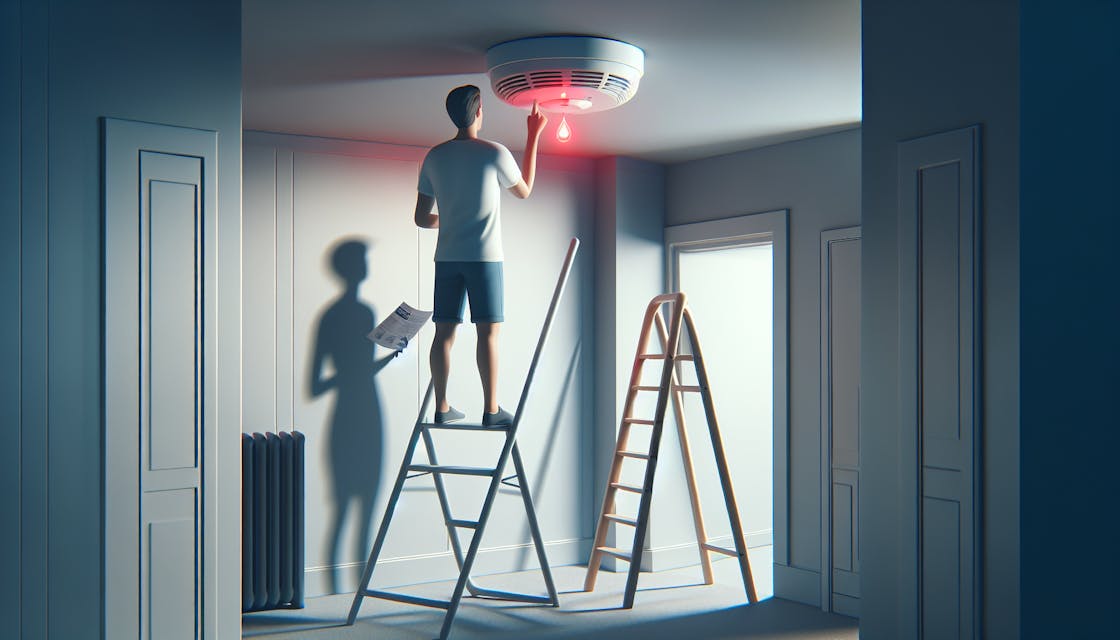Quick Guide: How Do You Turn Off a Smoke Alarm Properly?
Smoke alarms are vital for home safety, alerting us to the presence of fire or smoke. However, occasional false alarms can be frustrating, especially if you’re in the middle of cooking or other activities. Knowing how to turn off a smoke alarm quickly yet safely can bring peace of mind. In this guide, we’ll explore the step-by-step process to silence your smoke alarm without compromising your home’s safety.
Understanding the Importance of Smoke Alarms
Before diving into the steps to turn off a smoke alarm, it’s important to recognize why these devices are so critical. Smoke alarms are designed to detect fire and smoke, providing early warnings that could save lives. They reduce the risk of fire-related injuries by up to 50%. Even when a smoke alarm triggers due to non-emergency reasons, such as steam from cooking, it is crucial to handle the situation without disabling the device entirely or neglecting its upkeep.
Why Does a Smoke Alarm Go Off Randomly?
It’s common to experience a false alarm from time to time. Various factors can trigger smoke alarms, such as:
- Steam from cooking or showers: High moisture levels can sometimes mimic smoke.
- Dust buildup: Dust particles entering the smoke detector can cause it to sound an alarm.
- Insects: Small bugs crawling inside the alarm can also trigger a false signal.
- Low battery levels: Some smoke alarms chirp continuously if the batteries need replacement.
- Strong odors: Aerosols, cleaning agents, or even perfumes may set off an alarm.
By identifying the cause, you can determine whether the alarm is genuine or simply a nuisance.
Related Topic: HySecurity’s Recent Product Updates: A Comprehensive Overview
How to Turn Off a Smoke Alarm Safely
It’s essential to silence your smoke alarm without permanently disabling it. Most modern smoke alarms come with a hush or silence button that allows you to temporarily quiet the alarm for a short period, usually around 8-10 minutes. Here’s how to safely turn off a smoke alarm:
1. Confirm There’s No Fire Hazard
First and foremost, ensure that there is no fire or smoke causing the alarm. Check the room or area where the alarm was triggered. If everything seems fine and you’ve ruled out a fire hazard, you can proceed to silence the alarm.
2. Locate the Silence Button
Most smoke alarms are equipped with a silence button. This button is typically located on the face of the device. Pressing this button should silence the alarm temporarily. Make sure to press and hold the button for a few seconds to ensure it registers the command.
3. Reset the Alarm
Once the cause of the false alarm has been addressed, it’s a good idea to reset the smoke alarm. This can usually be done by holding down the test/reset button for 15-20 seconds. Resetting the alarm ensures it’s ready to detect any potential smoke or fire threats moving forward.
4. Remove the Battery (If Necessary)
If the alarm continues to go off despite hitting the silence button or if it’s malfunctioning, you may need to remove the battery temporarily. Follow these steps:
- Open the alarm’s battery compartment (usually found on the back or side).
- Gently remove the battery.
- Wait a minute, then reinsert the battery to reset the device.
Make sure to replace the battery as soon as possible if it’s low. Never leave the alarm without a working battery.
5. Clean the Smoke Alarm
A common cause of nuisance alarms is dust or debris buildup inside the smoke detector. To clean your smoke alarm:
- Turn off the power source if it’s hardwired.
- Remove the alarm from the ceiling or wall.
- Use a vacuum cleaner with a soft brush attachment to remove dust from the vents and sensor chamber.
- Reinstall the alarm and restore power.
6. Replace the Smoke Alarm (If Old or Malfunctioning)
If your smoke alarm is older than 10 years or frequently malfunctions, it’s time for a replacement. Smoke alarms lose their effectiveness over time, so regular maintenance and replacement are essential.
Related Topic: Cloud-Based MyQ Solutions for Smart Home Security and Data Security Concerns
Types of Smoke Alarms and How to Silence Them
Different smoke alarms may require unique methods to silence. Below is a guide based on the type of smoke alarm installed in your home.
1. Battery-Powered Smoke Alarms
These are common in older homes. To turn off a battery-powered smoke alarm:
- Press the silence button.
- If that doesn’t work, remove the battery.
- Replace the battery if necessary.
2. Hardwired Smoke Alarms
Hardwired alarms are connected to your home’s electrical system and often include a battery backup. To silence them:
- Press the hush button.
- If the alarm persists, you may need to cut the power at the breaker box temporarily.
- Reconnect the power after the issue is resolved.
3. Smart Smoke Alarms
Smart smoke alarms, such as the Nest Protect, can be silenced via a smartphone app:
- Open the smoke alarm’s app on your phone.
- Navigate to the alarm settings and press Silence Alarm.
These alarms are often more sophisticated and may also give insights into what triggered the alarm.
Related Topic: High-Quality Card Readers Key Features
How to Prevent False Alarms in the Future
Now that you know how to turn off a smoke alarm, let’s look at ways to reduce the likelihood of false alarms.
- Install alarms away from kitchens and bathrooms: Avoid placing smoke detectors too close to cooking areas or bathrooms where steam is common.
- Regularly clean the smoke alarm: Use a vacuum to remove dust and debris every few months.
- Replace batteries annually: A low battery is one of the most common reasons for a chirping smoke alarm. Replacing the battery yearly ensures it stays functional.
- Use the right type of alarm for each area: In kitchens, consider using a photoelectric smoke alarm, which is less sensitive to cooking-related particles than an ionization alarm.
Common Misconceptions About Turning Off Smoke Alarms
It’s important to address some common misconceptions about silencing smoke alarms. Here are a few myths:
- Permanently disabling the alarm: Some people believe that removing the battery or turning off the power is an acceptable solution. This is dangerous, as it compromises your home’s safety. Always ensure the alarm is operational after silencing it.
- Covering the alarm with a plastic bag: Some may suggest covering the alarm to prevent false triggers. This is not recommended, as it prevents the alarm from detecting genuine smoke.
- False alarms mean the alarm is broken: Not necessarily. False alarms are often caused by environmental factors such as steam or dust, not because the device is faulty.
Final Thoughts: When to Call a Professional
Smoke alarms are a critical part of home safety, but they can sometimes trigger false alarms. By following the steps outlined in this guide, you can safely and effectively turn off your smoke alarm when needed. Always ensure that your smoke alarm is functioning correctly after silencing it, and take steps to prevent future false alarms through proper maintenance and installation.
Maintaining a balance between convenience and safety is key. By understanding how to silence your smoke alarm responsibly, you protect your home without putting anyone at risk. Contact our experts to discuss further.
Related Topic: Understanding Swing Gate Safety Features


